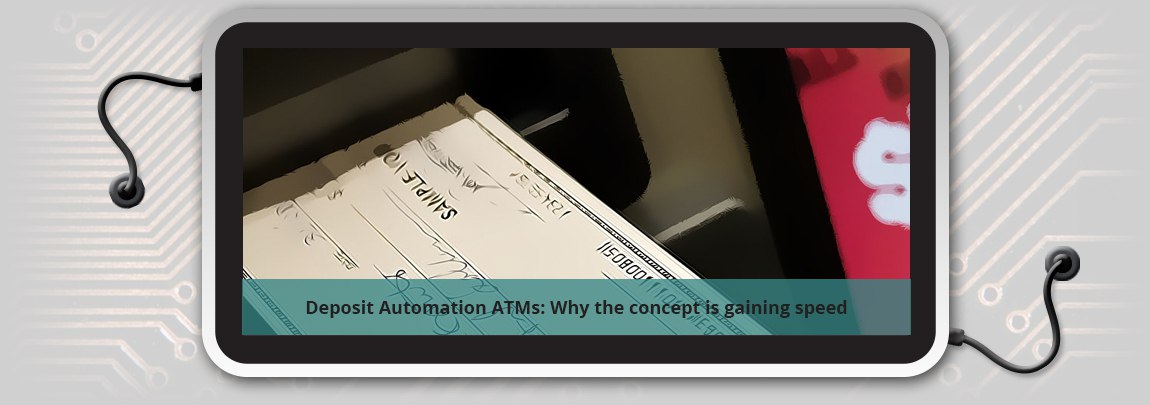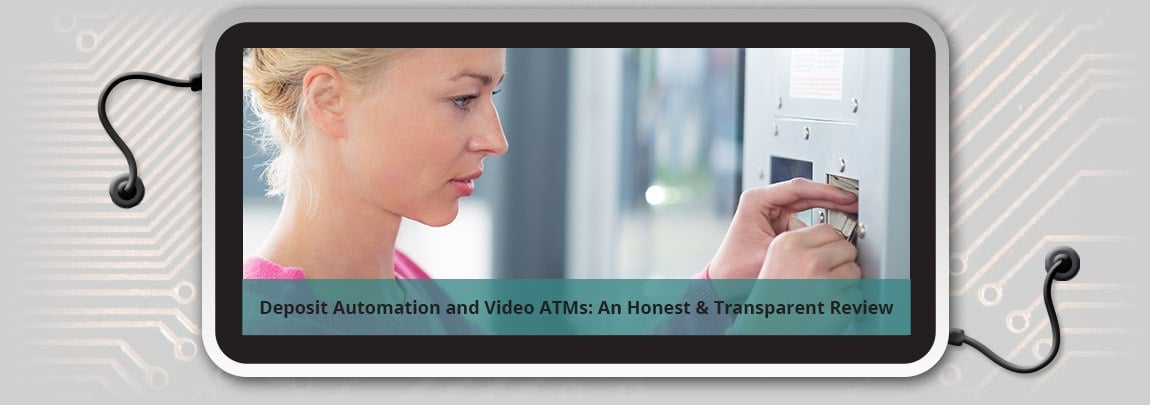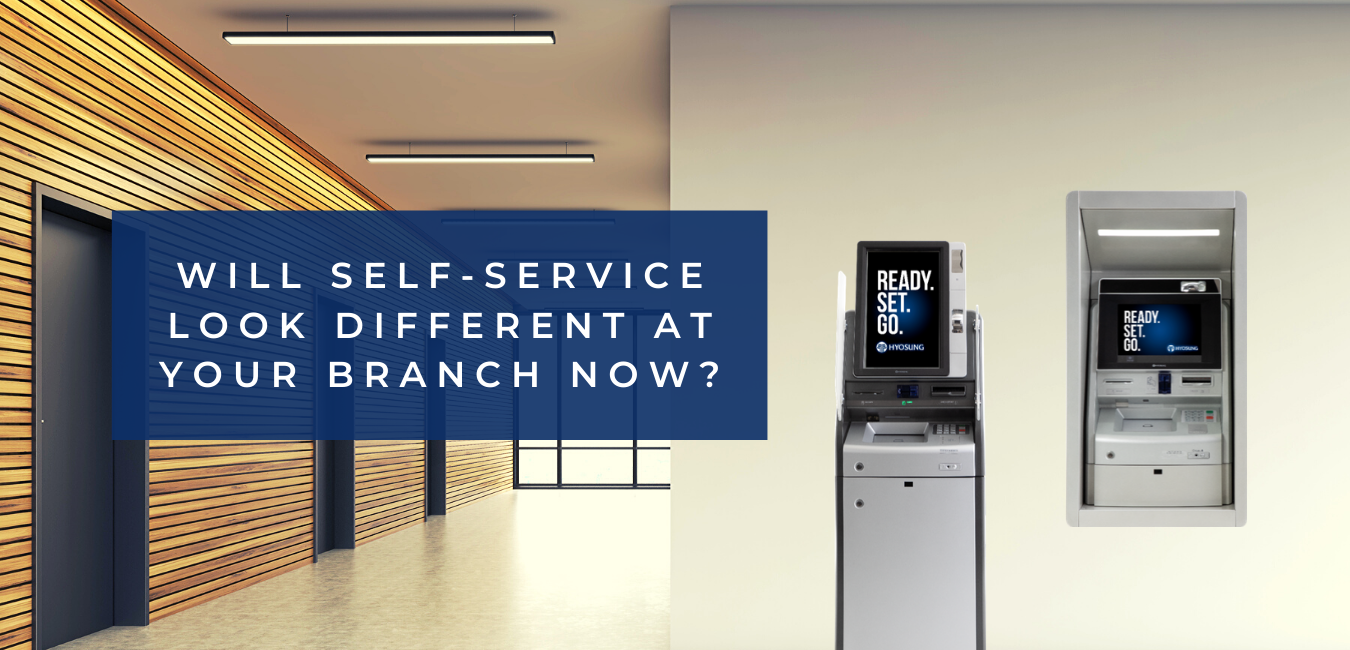Deposit Automation ATMs: Why the concept is gaining speed
With the rise in mobile capture, some may believe that deposit automation at the ATM is an expensive and unnecessary investment. However, as the ...


Looking to deploy deposit automation? Then you will want to read on to learn about the costs of installing and running deposit automation ATMs. There are costs associated with hardware, on the back end, as well as the agent that will transport the check images to your back end proof of deposit solution. These costs can sometimes be overlooked, so we want to provide a detailed overview of associated pricing.
Probably the easiest part of the deposit automation puzzle is the new ATM hardware itself. A brand new ATM with deposit automation ranges from about $40,000 to $60,000 depending on which manufacturer you choose. Most manufacturers are migrating into a single throat solution, meaning you can put both checks and cash in the same slot as opposed to having two separate modules for checks and cash. If you have also purchased a Self Serv ATM from NCR or a 7600 series from Hyosung, your ATM can be upgraded to deposit automation. The typical upgrade costs for the hardware will run about $20,000 to $25,000 for these ATMs.
The cost that most people are unaware of is for the consolidator server, which runs in the background for your ATM network. This server can either be purchased through a third party vendor (Conlan Financial Solutions, Jaguar, etc.) or others that provide a consolidator server hardware and software. There are also options direct from the manufacturer like NCR’s Passport Server.
Many of the processors in the market have actually contracted with NCR and have purchased their own NCR Passport server to act as the image server for their particular switch. The cost for this server can range anywhere from $10,000 to $12,000 on the low end to $30,000 to $50,000 on the high end. There really isn’t much difference in functionality from what the consolidator servers offer. At the end of the day, the server is taking the images from the ATM and consolidating them into a file format that will feed your back end proof for clearing items. Many institutions and processors are moving towards separating cash and check at the consolidator server so that instant credit can be issued for cash while normal checks can flow through the normal clearing process of 24 to 48 hours, depending on hold regulation.
The consolidator can be offered in two pricing models. You can purchase it for the $12,000 to $30,000 or some vendors will offer this as a service with a monthly fee ranging from $300 to $500 a month depending on the server you select. If you are looking to operate just a few ATMs, the outsourced consolidator server as a service can be a more efficient and cost effective way to get into deposit automation. If you have a larger fleet of ATMs, typically it is better to purchase the consolidator server yourself and run it in-house because your cost will be spread out across a larger amount of ATMs, therefore, reducing operational expense. Most FIs today run their consolidator server virtualized for any IT professionals that might be reading this.
The agent is one of the most important pieces and every single consolidator server or alternative for imaging out there uses one. The agent is a small piece of software installed locally on the ATM terminal and costs a few hundred dollars per agent. The agent is the piece of software that transmits the totals and check images to the consolidator server. In the event of loss of communication, most vendors’ agents guarantee delivery. This means if the ATM goes down and is unable to communicate with the consolidator server, it will automatically deliver the items that are waiting to be delivered if there is a communication outage when it comes back up. There is typically an annual fee associated with the agent for most installations.
Because of the additional functionality of the ATM, hardware maintenance costs will increase to $4000 - $6000 per unit/per year. Due to the additional specialized imaging software required you can expect to pay $500 + annually for software maintenance and subscription services for image deposit enabled units. Other costs to anticipate are initial setup and ongoing annual solution maintenance fees. Initial Consolidation Server set up fees can range from $3000 to $5000 and initial ATM one time set up fees can be anywhere from $400 - $800 / per ATM. Ongoing annuity or solution support fees can range from $3000 - $5000 per year / per ATM as well as any ongoing solution support fees for the server environment which may be in the $1000- $2000 /per year range.
It is important to consider all of the estimated costs when calculating the potential investment in and value derived from deposit automation. Typical installations see an immediate migration between 25 to 30% of their deposit transactions from the teller line to the ATM channel. You would be able to see the significant savings and pay for the cost in a very short amount of time.
These are the three main components of any Deposit Automation set up. While some of these costs may seem high, when you look at the overall value of a Teller transaction costing you $4 or more at a teller line versus a deposit automation transaction that costs an average of 50 cents, it can make a lot of sense. Typical installations see a migration between 25 to 30% of their deposit transactions, nearly immediately from the Teller line to the ATM channel. You would be able to see the significant savings and pay for the cost in a very short amount of time. In addition, many customers are used to self-service and doing it themselves, so the fact that they can deposit with extended hours even when the branch is closed, is a huge value for them. Many institutions offer deposit hours till 7 or 8 pm at night. This will increase the value of your customer relationships by providing a great customer service experience.

With the rise in mobile capture, some may believe that deposit automation at the ATM is an expensive and unnecessary investment. However, as the ...

Technology has revolutionized the banking industry, leaving financial institutions wondering which advancements make sense for their unique needs....

As states re-open in some form or fashion in the coming weeks, many Financial Institutions are faced with the new reality of what to do with the...